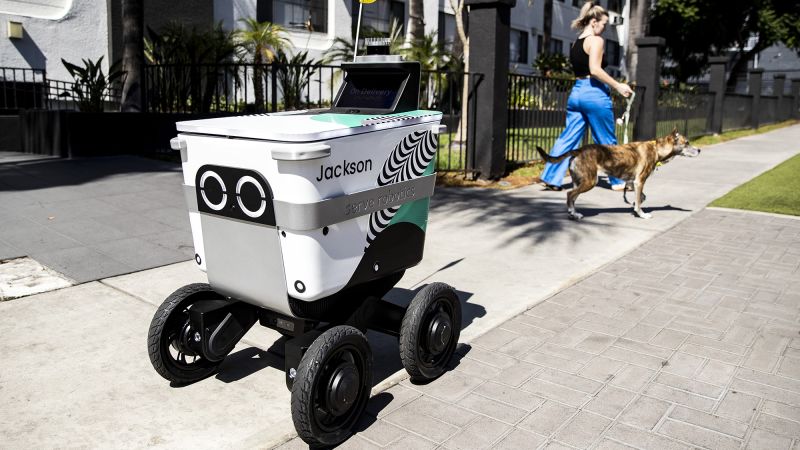Its name is Courtney.
Courtney doesn’t have eyes, but it’s got sensors everywhere. There are two blinking lights on the front of its boxy body to approximate wide, moony pupils. It’s been described as a “large cooler on four wheels.”
Courtney is a food delivery robot from Serve Robotics, transporting Uber Eats orders typically when there’s a mile or less between a restaurant and a customer. Courtney showed up in my Atlanta neighborhood one day toward the end of June with dozens of other four-wheeled bots with names like Deandre and Orion.
Courtney and the bots have had some trouble navigating Atlanta. They get confused at crosswalks. They move with the speed and caution of a first-time driver, stilted and shy, until they suddenly speed up without warning. Their four wheels look like they were made for off-roading, but they still get stuck in the cracks of craggy sidewalks. Most times I see the bots, they aren’t moving at all.
It's Courtney, roaming in Atlanta. Scottie Andrew/CNN
When they first got here, they were objects of curiosity. People took pictures of them and made TikToks when they spotted them on the street for the first time — the future is now!
Three months after their arrival, though, the novelty has worn off. They’re not photo ops anymore. Cyclists swerve to avoid them like any other obstacle in the road. Patrons of Shake Shack (a national partner of Serve) weave around the mess of robots parked in front of the restaurant to make their way inside and place orders on iPads. They’re as much an accepted part of life in my neighborhood as the obnoxious scooters that litter sidewalks.
“I think folks are always asking, ‘When are robots finally here?’ They really are finally here,” Serve Robo
Continue Reading on CNN
This preview shows approximately 15% of the article. Read the full story on the publisher's website to support quality journalism.
